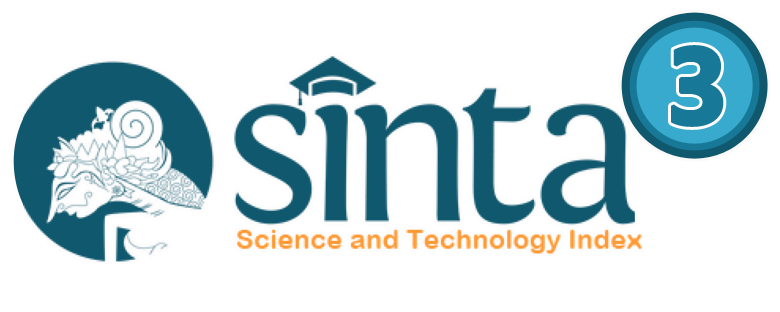The Effectiveness of Using Digital Transaction Applications with the Technology Acceptance Model for Financial Management
DOI:
https://doi.org/10.35838/jrap.2024.011.02.18Keywords:
Accounting Inofrmation System, Digital Transaction Application, Technology Acceptance ModelAbstract
Purpose: This study aims to examine the effectiveness of digital transaction applications in managing finances for small and medium-sized enterprises (SMEs) in the culinary industry.
Methodology: The Technology Acceptance Model (TAM) was used to analyze the factors influencing the adoption of digital transaction applications among SMEs.
Finding: The results show that perceived usefulness, perceived ease of use, and attitude towards using digital transaction applications have a positive impact on the intention to use these applications. The study also found that external factors, such as individual factors and social factors, influence the adoption of digital transaction applications.
Implication: The findings of this study have implications for the development of digital transaction applications that are tailored to the needs of SMEs in the culinary industry.
Originality: This research is original because it combines the Technology Acceptance Model (TAM) with external factors such as individual and social factors to analyze the adoption of digital transaction applications in the MSME culinary industry.
Keywords: Accounting Information System, Digital Transaction Application, Technology Acceptance Model.
Downloads
References
Albarghouthi, M., Qi, B., Wang, C., & Abbad, M. (2020). ERP adoption and acceptance in Saudi Arabia higher education: A conceptual model development. International Journal of Emerging Technologies in Learning (iJET), 15(15), 110-120.
Astari, A., Yasa, N., Sukaatmadja, I., & Giantari, I. G. A. K. (2022). Integration of technology acceptance model (TAM) and theory of planned behavior (TPB): An e-wallet behavior with fear of COVID-19 as a moderator variable. International Journal of Data and Network Science, 6(4), 1427-1436. https://doi.org/10.5267/j.ijdns.2022.5.008
Bougie, R., & Sekaran, U. (2020). Research Methods for Business. Asia Edition (Johnson Lise, Ed.).
Chandio, F. H., Irani, Z., Zeki, A. M., Shah, A., & Shah, S. C. (2017). Online banking information systems acceptance: An empirical examination of system characteristics and web security. Information Systems Management, 34(1), 50-64. https://doi.org/10.1080/10580530.2017.1254450
Dewi, S. R. (2023). Upgrading Tata Kelola Keuangan Bagi UMKM Terintegrasi Dengan Financial Digital. Jurnal Pengabdian Masyarakat, 4(1), 135-147. https://doi.org/10.32815/jpm.v4i1.1144
Firmansyah, A. (2018). Kajian Kendala Implementasi E-Commerce Di Indonesia. Masyarakat Telematika Dan Informasi: Jurnal Penelitian Teknologi Informasi Dan Komunikasi, 8 (2), 127-136.
Juliandini, N. K. W., Budiartha, I. N. P., & Ujianti, N. M. P. (2023). Efektivitas penggunaan quick response code indonesian standard (qris) dalam transaksi jual beli di pasar kumbasari denpasar. Jurnal Analogi Hukum, 5(2), 227-232. https://doi.org/10.22225/ah.5.2.2023.227-232
Kim, H. J., Mannino, M., & Nieschwietz, R. J. (2009). Information technology acceptance in the internal audit profession: Impact of technology features and complexity. International Journal of Accounting Information Systems, 10(4), 214-228. https://doi.org/10.1016/j.accinf.2009.09.001
Lee, M., Chai, C., Xiong, Y., & Gui, H. (2022). Technology acceptance model for Building Information Modelling Based Virtual Reality (BIM-VR) in cost estimation. Journal of information technology in construction, 27, 914-915.
Liébana-Cabanillas, F., Sánchez-Fernández, J., & Muñoz-Leiva, F. (2014). The moderating effect of experience in the adoption of mobile payment tools in Virtual Social Networks: The m-Payment Acceptance Model in Virtual Social Networks (MPAM-VSN). International Journal of Information Management, 34(2), 151-166. https://doi.org/10.1016/j.ijinfomgt.2013.12.006
Okine, A. N. D., Li, Y., Djimesah, I. E., Zhao, H., Duah, E., Kissi Mireku, K., ... & Adjei, D. B. (2024). Measuring crowdfunding success for small and medium‐sized enterprises sustainable development: Insight from the social networking theory. Business Strategy & Development, 7(2), e387. https://doi.org/10.1002/bsd2.387
Saad, M., Lutfi, A., Almaiah, M. A., Alshira’h, A. F., Alshirah, M. H., Alqudah, H., ... & Abdelmaksoud, O. (2022). Assessing the intention to adopt cloud accounting during COVID-19. Electronics, 11(24), 4092. https://doi.org/10.3390/electronics11244092
Sardana, S., & Bajpai, V. N. (2020). E-banking service quality and customer satisfaction: An exploratory study on India. International Journal of Services and Operations Management, 35(2), 223-247.
Sumerta, I. K., Widyagoca, I. G. P. A., Adiandari, A. M., & Herlambang, P. G. D. (2019). Analysis of technology acceptance model (TAM) to use E-money in Bali Province. International Journal of Advanced Trends in Computer Science and Engineering, 8(1.5), 206-211.
Wicaksono, A. R., Maulina, E., Rizal, M., & Purnomo, M. (2023). Technology Accepted Model (TAM): Applications in Accounting Systems. Journal of Law and Sustainable Development, 11(5), e547-e547. https://doi.org/10.55908/sdgs.v11i5.547
Widjanarko, W., Pramukty, R., Hadita, H., & Yulianah, Y. (2022). Strategic Financial Management in Micro, Small and Medium Enterprises (Msmes). Jurnal Ekonomi, 11(1), 255-260.
Zamani, S. Z. (2022). Small and Medium Enterprises (SMEs) facing an evolving technological era: a systematic literature review on the adoption of technologies in SMEs. European Journal of Innovation Management, 25(6), 735-757. https://doi.org/10.1108/EJIM-07-2021-0360
Downloads
Published
Issue
Section
License
Authors who publish with this journal agree to the following terms:
- Authors retain copyright and grant the journal right of first publication with the work simultaneously licensed under a Creative Commons Attribution-ShareAlike 4.0 International License that allows others to share the work with an acknowledgement of the works authorship and initial publication in this journal.
- Authors are able to enter into separate, additional contractual arrangements for the non-exclusive distribution of the journals published version of the work (e.g., post it to an institutional repository or publish it in a book), with an acknowledgement of its initial publication in this journal.
- Authors are permitted and encouraged to post their work online (e.g., in institutional repositories or on their website) prior to and during the submission process, as it can lead to productive exchanges, as well as earlier and greater citation of published work (See The Effect of Open Access).














